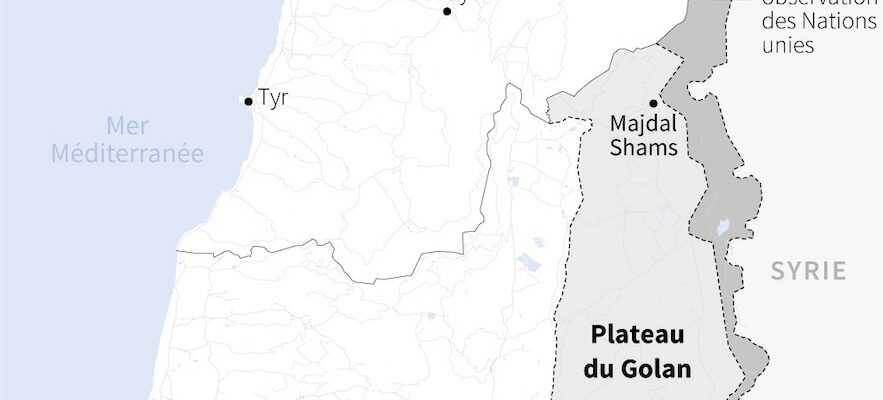The rocket fell from the sky in the middle of a soccer match, crashing on a dozen young men aged 10 to 20, Saturday, July 27, in the Druze town of Majdal Shams. If these young men are the first victims of the Golan Heights since October 2023 and the start of the war between Israel and Hamas, this territory annexed two-thirds by the Hebrew state for more than 40 years is familiar with Israeli-Arab clashes.
The reason: its particularly strategic character in the region. The territory is located to the east of Israel and overlooks the Sea of Galilee, and its breathtaking view of Syria and Israel gives it capital military importance. Added to this are significant water resources – several rivers actually enter or cross the Golan before flowing into the Jordan – which have been coveted for centuries.
Occupied by Herod in Ancient Rome, then by the Franks and the Ottomans, the Golan – the biblical name for this region – finally became a Syrian territory in 1946. Until the water issue became, in the mid-1960s, one of the main causes of the Israeli-Syrian dispute. Damascus then accused Israel of having diverted the sources of the Jordan. Violent clashes broke out with the Syrian army, which pounded Israeli positions below. Finally conquered by Israel at the end of the Six-Day War in 1967, the territory suffered the loss of tens of thousands of Syrians who fled the war or were expelled. Others chose to remain in the occupied zone.
The border area between Lebanon and Israel and the Golan Heights
© / afp.com/Patricio ARANA, Sabrina BLANCHARD, Nalini LEPETIT-CHELLA
Middle East Buffer Zone
With a surface area of 1,200 km2, also bordering Lebanon and Jordan, this plateau was finally annexed by Israel on December 14, 1981, even though Syria has since demanded its total restitution. Today, approximately 25,000 Israelis live alongside some 23,000 Druze, a community whose religion is derived from Islam. The latter mostly claim to be Syrian, while having the status of residents in Israel. A nationality largely rejected by the Druze inhabitants, who “have maintained close ties with Syria for decades,” underlines the american newspaper New York Times.
Despite failed Israeli-Syrian negotiations over the territory in the 1990s, residents of the Golan Heights enjoyed several decades of relative peace. That is, until the area gained renewed importance as Hezbollah and Iran – two of Israel’s arch-enemies – moved closer to the Syrian regime. “Since 2011, Israeli officials have expressed relief that the Golan Heights has acted as a buffer of sorts for the conflict in Syria, whose President Bashar al-Assad is backed by Iran,” the report said. THE New York Times in 2019.
Very recently, the Golan Heights has been a tool of influence for Israeli Prime Minister Benjamin Netanyahu. While its annexation was not recognized by any member of the international community, Donald Trump’s administration announced in 2019 that it now considered it Israeli territory. “A dramatic decision” which then “strengthened Benjamin Netanyahu’s hopes of re-election”, analyzed in a foreshadowing article the british daily The Guardian.
Illustration of regional conflagration
Today, the area finds itself more than ever at the heart of a conflict, this time regional. Because since the new outbreak of the Israeli-Palestinian war in October 2023, Hezbollah, an ally of Hamas, has fired several times towards the Golan, whose population has not been evacuated by Israel. Strikes without casualties, until the bombing of this Saturday, July 27.
A worrying step, whose “risk of escalation and destabilization” worries London and Berlin, who have called on Hezbollah to cease its attacks. Just like France, which asked this Sunday, July 28 “that everything be done to avoid a new military escalation and will continue to act with the parties to this end.”
“We support Israel’s right to defend its citizens against terrorist attacks,” said the head of American diplomacy, Antony Blinken, a few hours after Israeli Prime Minister Benjamin Netanyahu promised to respond to this attack by making Lebanese Hezbollah “pay a high price.” A threat immediately supported by Iran, which warns of the “unpredictable consequences” in the event of an Israeli retaliatory attack against Lebanon.
